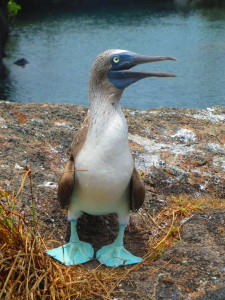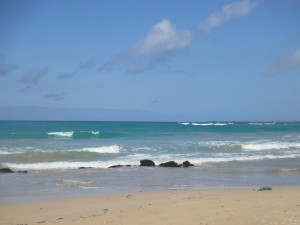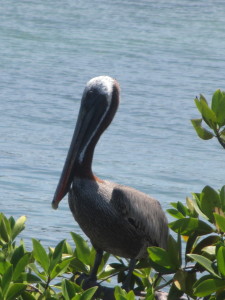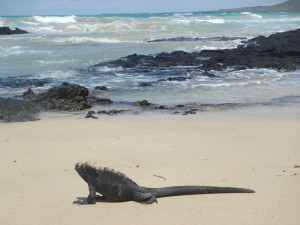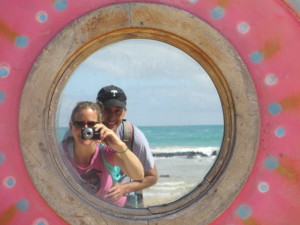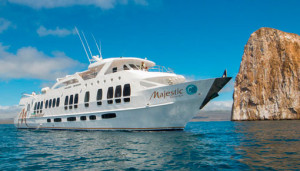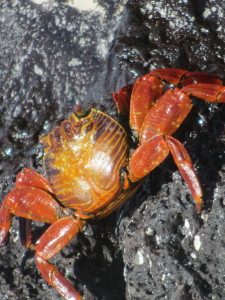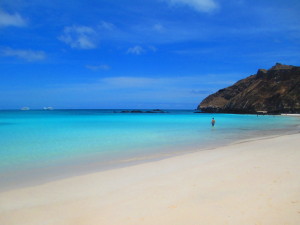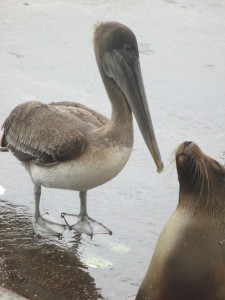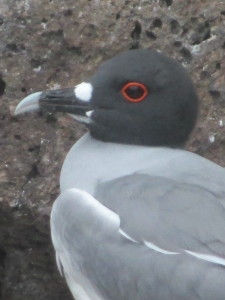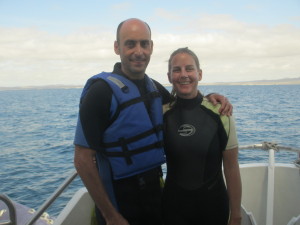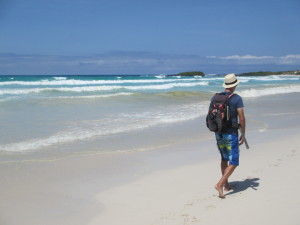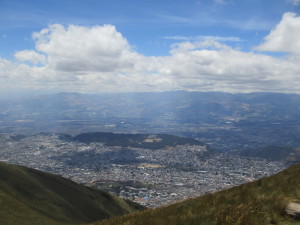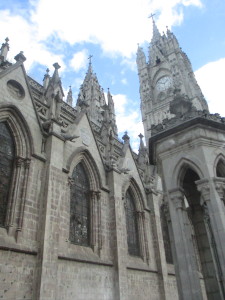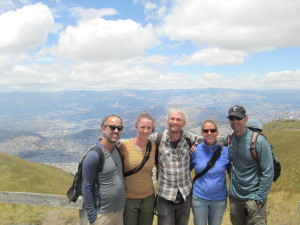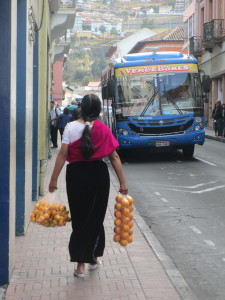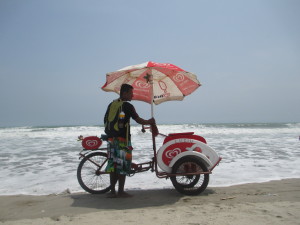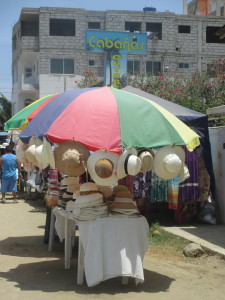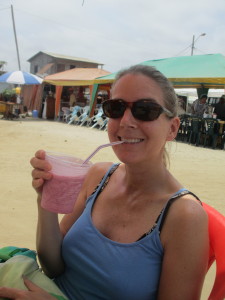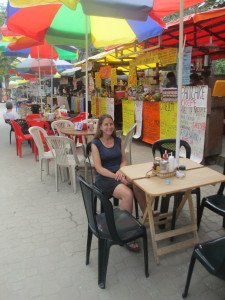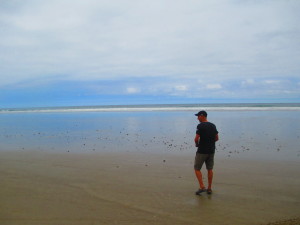Ecuador: Facts + Observations
- Ecuador is a small country (the size of Colorado), but it packs a punch! There are four diverse regions: Amazon Rainforest, Andian Highlands, Pacific coast and the Galapagos Islands. We explored all four regions.
- The Panama hat is actually from Ecuador. Say what? In 1904 President Roosevelt was wearing an Ecuadorian hat when he visited the Panama Canal, and the media gave it the wrong name. The hats are still made in Ecuador.
- Ecuador’s four major exports are oil, shrimp, bananas and roses. Yes, roses! Due to the equator, there’s natural light all year round which roses need to thrive, so they grow nice and tall. We were told that an Ecuadorian suitor should never buy his gal roses because they are such a “common” flower.
- The traffic in Ecuador is relatively sane. The country as a whole wins the civilized traffic award based on driver courtesy and low horn usage. Note: the bus drivers still drive like maniacs.
- Rafael Correa has been the president for the past 10 years. An economist by trade, he has reduced Ecuador’s debt significantly and invested heavily in education and infrastructure.
- Buses work differently in Ecuador, making our bus rides even more challenging and annoying than normal. 1) Even though you buy a “direct” bus ticket, in reality there’s no such thing. Every bus will literally stop a million times along the way to pick up and drop off people. 2) The driver has a security wall behind him, which means that passengers cannot see out the front of the bus. This means I get car sick unless I take a Dramamine. 3) Vendors regularly get on and off the buses and walk down the aisles to sell their goods, like fried chicken, natural supplements, candy, sun glasses, and hot dogs.
- We heard more stories about travelers getting pick-pocketed or scammed in Ecuador than in all other countries combined. Luckily nothing happened to us.
- Ecuadorians love their ice cream! They eat it on foot, bikes, motorcycles and horses. You can buy ice cream from vendors in parks, on street corners and at traffic lights. Ice cream is to Ecuadorians as soup is to Peruvians.
Cuenca: Our First Stop
Located in the Andes in southern Ecuador, Cuenca is a picturesque city with four rivers running through it. A major expat community, Cuenca offers a nice blend of local and international, old and new. Known to be Ecuador’s center of art and culture, Cuenca has a charming historical district, cobblestone streets, old colonial homes and over 50 churches. I was quite pleased to discover that Cuencans are in love with drinking hot chocolate made from Ecuador’s fine cocoa and milk.
Through Airbnb, we signed up to spend five days with Diana and her mother Ines in their old family home. What started as a rental quickly turned into a genuine friendship and we extended our stay to 10 days.
It was appealing for us to live with a family so we could experience Ecuador on a more intimate level. Additionally, we wanted to practice our Spanish, and what better way to do so than by living with a Spanish-speaking family? At times our Spanish felt fluid and graceful, while at other times (perhaps most of the time) it felt clunky and chunky. But laughter goes a long way and really, we did just fine.
On our first night in town, Diana, who is an artist, art teacher and hot chocolate addict, and her friend John drove us around and showed us all the local hot spots, including a giant swing (keep reading to find out more). This was a fun outing that included a visit to their favorite ice cream shop. We ended up spending a lot of time together that week. One memorable night we drank cheap whiskey and went out salsa dancing. We ate several meals together and we shared a lot about our lives in Ecuador and the US.
John is a big futbol (soccer) player and one night he invited us to join him for one of his games. Half the players on both teams were adults and the other half were kids, including Diana’s niece and nephew. The boys were not only young and fast, they also had great ball skills so we basically got schooled for an hour. It was a ton of fun and yes, we were very sore the next few days.
One Sunday Ines invited us to join her family at her “campo” (country home) about 30 minutes outside the city. There were 15 of us and we spent the leisurely day walking around the wooded property, eating heaps of food, drinking mugs of hot chocolate, practicing our Spanish and relaxing by the campfire.
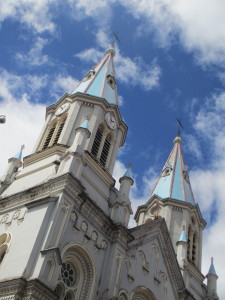
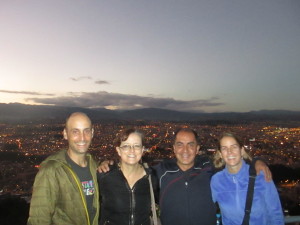
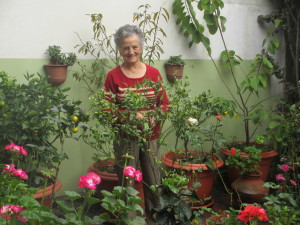


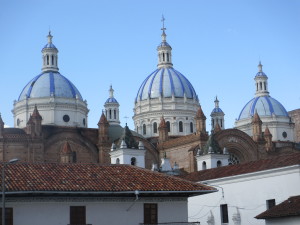
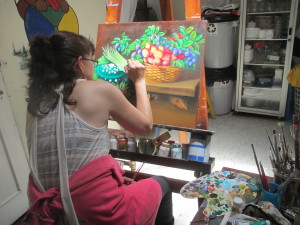
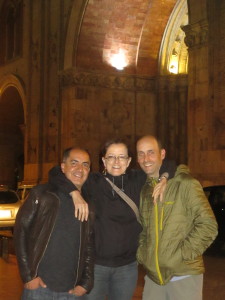

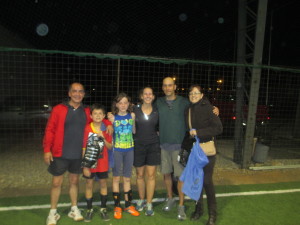
You think you know someone… and then he climbs onto a big metal swing with nothing but a seat belt to hold him in place and swings like a giddy fool high above the city of Cuenca.
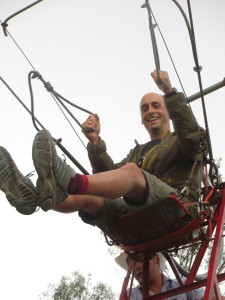

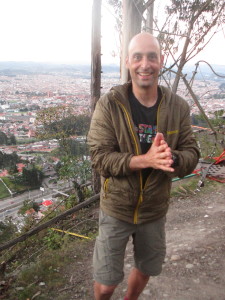 Harry was pretty pleased with himself!
Harry was pretty pleased with himself!
These Guys
My Portland friend Beth e-introduced us to her friends living in Cuenca. Bill, a retired American teacher, and Rodolfo, an Ecuadorian tour guide, invited us over for a homemade dinner one night with their American teacher friends Karen and Dorothy. They gave us the insider scoop about Ecuador. We had so much fun and laughed like crazy at Rodolfo’s stories. On another afternoon we met to discuss our travel plans while indulging in the most fabulous mugs of hot chocolate ever made. These guys made our stay in Cuenca even more special than it already was.
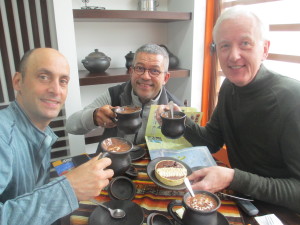
Cajas National Park
Cajas National Park, only 45 minutes outside of Cuenca, is located in the highlands of Ecuador at 14,000 feet. The jagged landscape is covered with tundra vegetation. There are over 270 lakes and lagoons in the park. We spent one day hiking around the gem that is Cajas.
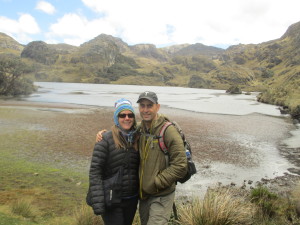
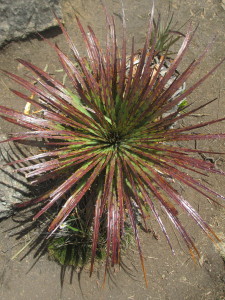
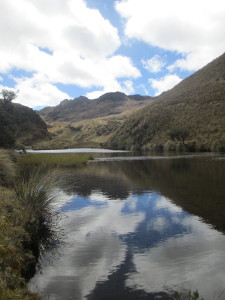
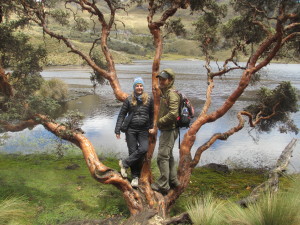
Baños: Adventure Capital of Ecuador
From Cuenca, we took one bus seven hours north and another bus one hour east to get to Baños. This cute town is surrounded by huge mountains on all sides. Many people come here to spend time and money zip-lining across the gorge, repelling down waterfalls and bungee jumping off bridges. We prefer our adventures to be a little more low-key, like riding bicycles on the highway next to trucks.
One day we rented some bikes and zipped down along the “route of the waterfalls”, a ride that took us on a busy road next to horses and big trucks. What a fun way to spend the day! Well, riding through a dark and scary tunnel wasn’t that fun, it was more like a total adrenaline rush. The 15 mile journey culminated at a majestic waterfall accessible only by hiking down into the gorge.

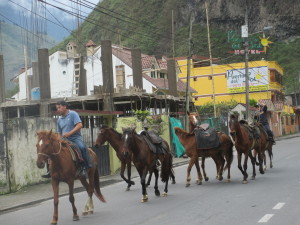
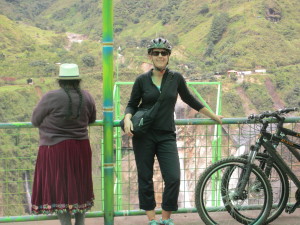
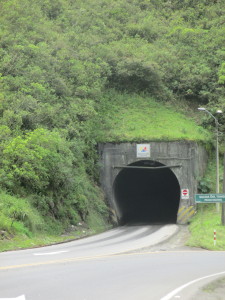


Misahualli: A Taste Of The Jungle
Taking Bill and Rodolfo’s advice, we made our way to Misahualli to experience the Ecuadorian jungle. It must be noted that the five hour bus ride through the mountains was just. plain. horrible. You get the picture.

Instead of embarking on a multi-day jungle tour, we opted to spend a few days in Misahualli where we got a taste of the jungle. We swam in the river and successfully avoided being eaten by a mysterious water creature (which surely exists). We hiked in the humidity up and down a muddy path to a waterfall that didn’t quite live up to its reputation, but we saw some magical butterflies along the way. We marveled at the beautiful jungle foliage and relaxed in the evenings listening to the sound of frogs and other creatures chirping and humming in the darkness.
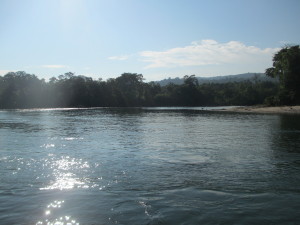
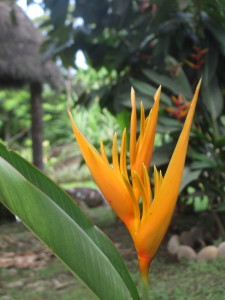
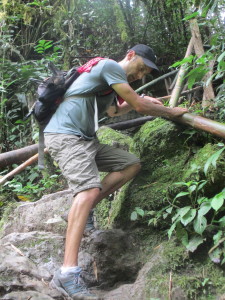
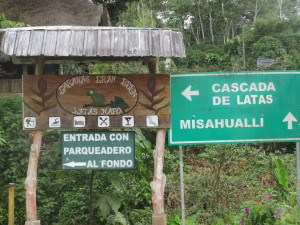

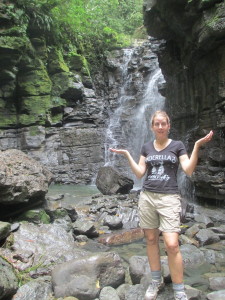
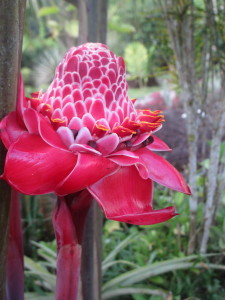
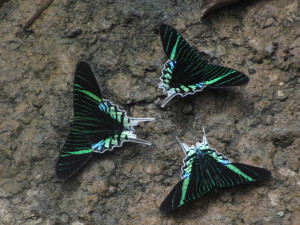
As tempting as it was, we both decided not to eat grilled grubs on-a-stick, a jungle delicacy. However, we did like the way you could choose which wiggling grub you wanted to eat before it got speared and cooked.
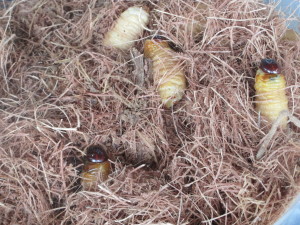
Misahualli is known for the monkeys that hang out in the small village square and I was determined not to leave until I could take a selfie with a cute little guy on my shoulder. Ha! Little did I know that instead, I would be bullied and harassed.
Harry went into a store to buy our bus tickets while I stood guard over our backpacks, happily watching the monkeys up in the trees, silently begging them to come and play with me. All of a sudden one of them ran over, pushed me (aka: scared me) out of the way and jumped onto my backpack. Within seconds he had unzipped the top part of my pack. I was yelling at him to stop, but he just hissed at me (did you know that monkeys could hiss?), grabbed my notebook and threw it on the ground. As I worried about my safety and well-being, he reached in further, grabbed my book and ran away. What a little shit!
Harry returned three minutes later, disappointed that he missed the spectacle.

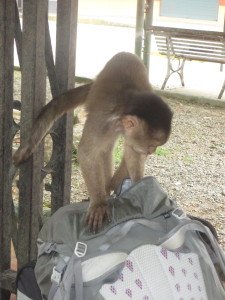
Up Next: Quito and the Ecuadorian Coast

